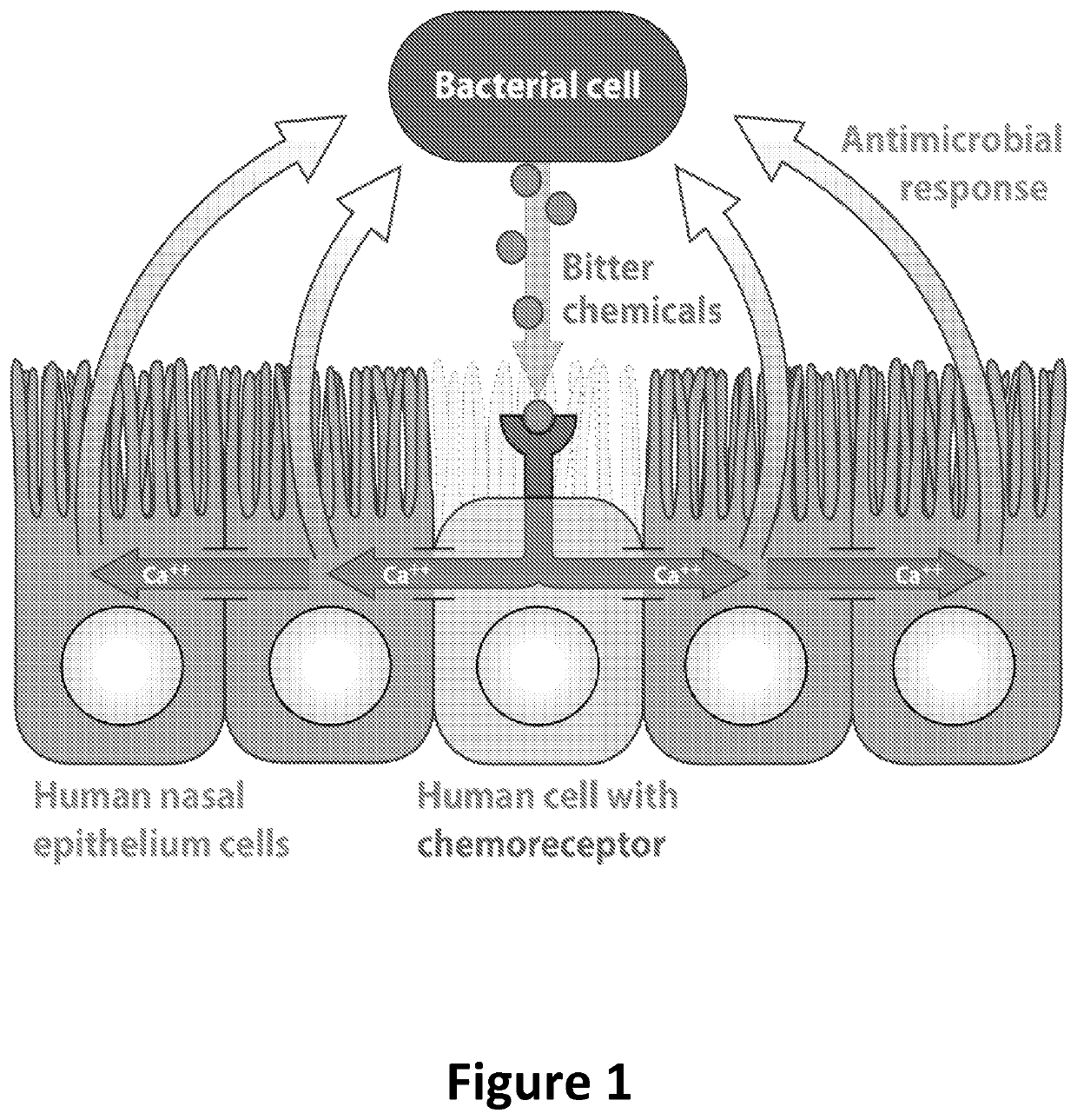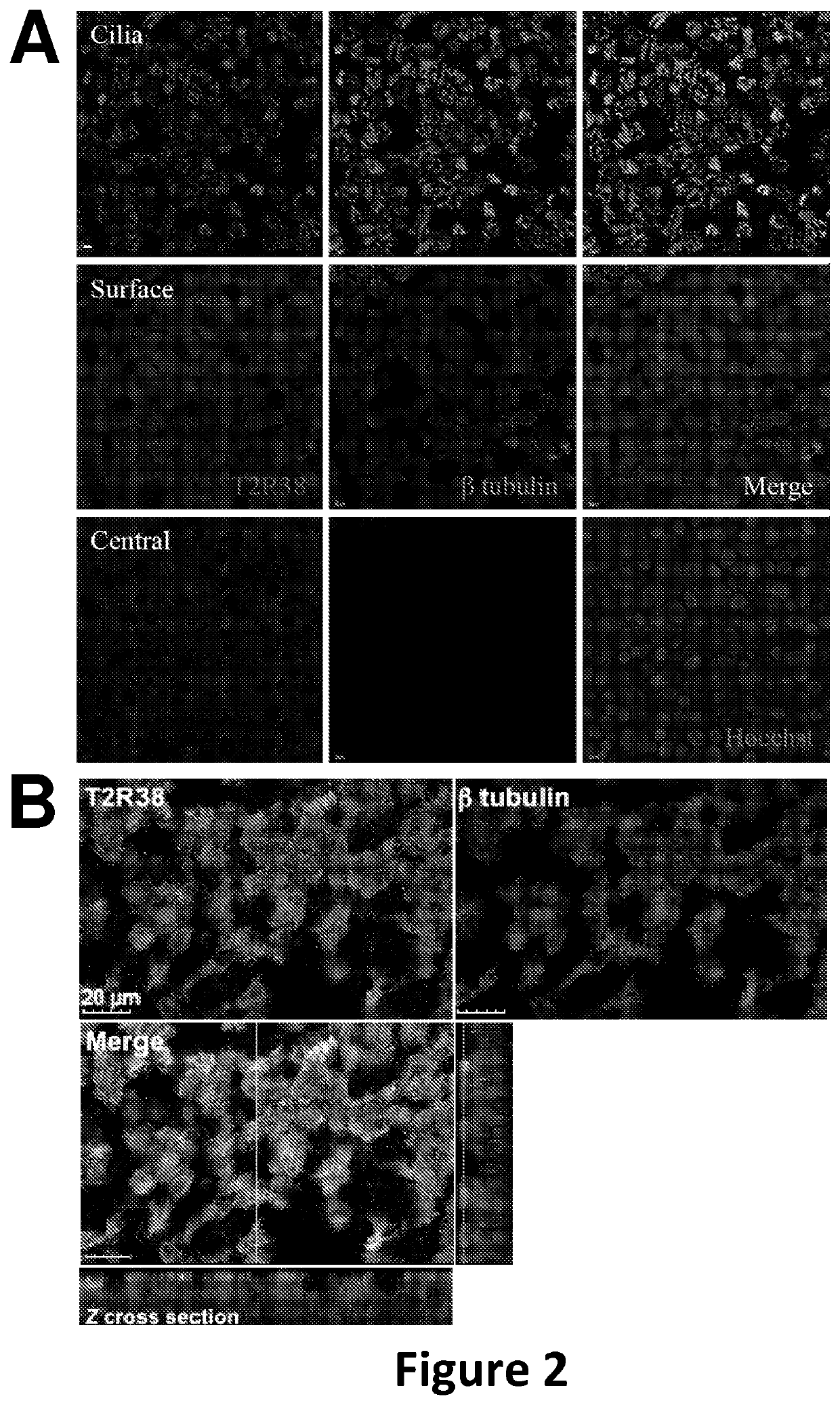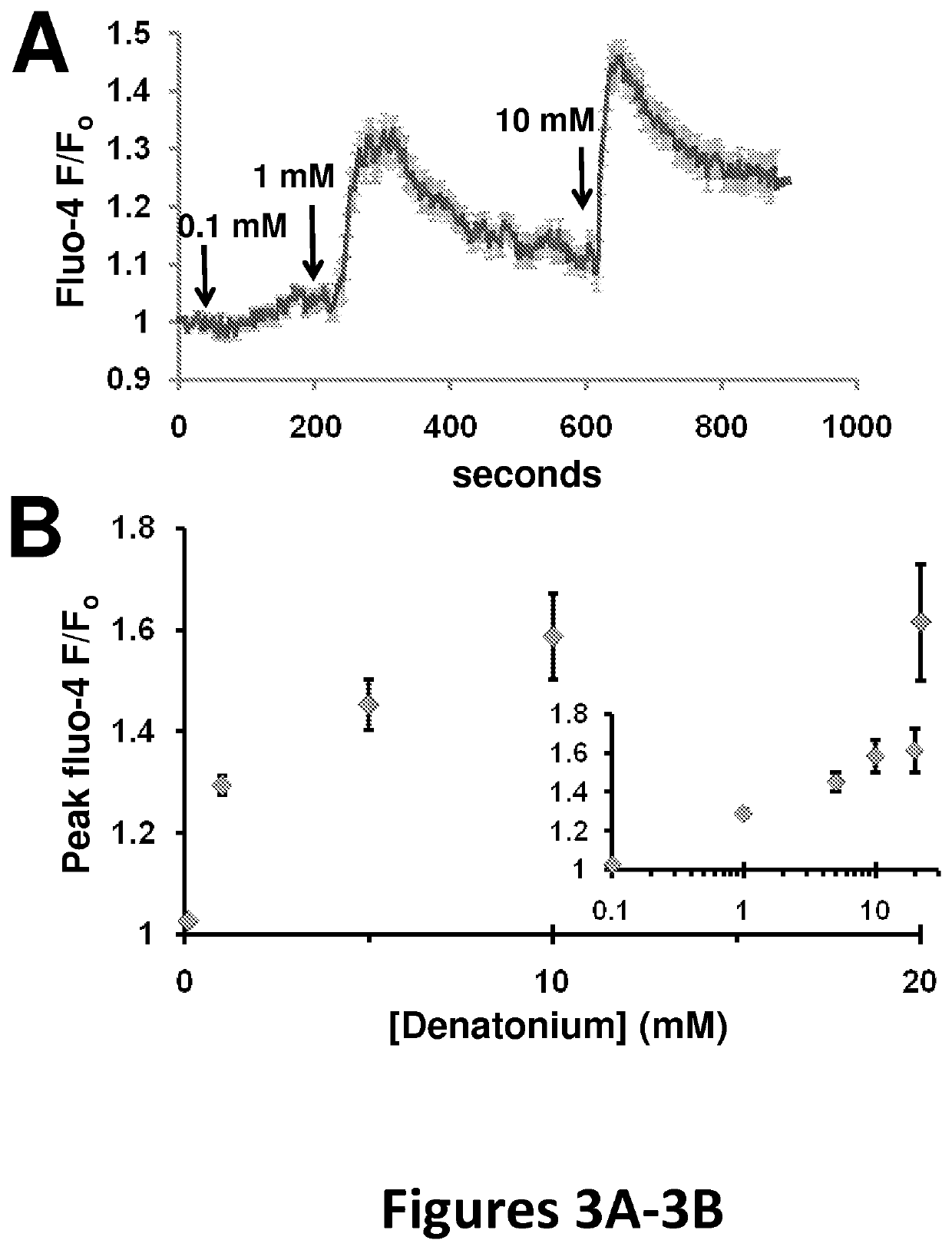Diagnosis and treatment for respiratory tract diseases
a technology for respiratory tract diseases and diagnosis, applied in the field of diagnosis and treatment, can solve the problems of 73 million restricted activity days, affecting the quality of the patient's life, and affecting the quality of the patient's life, and achieve the effect of stimulating nitric oxide (no) production and not affecting the quality of li
- Summary
- Abstract
- Description
- Claims
- Application Information
AI Technical Summary
Benefits of technology
Problems solved by technology
Method used
Image
Examples
example 1
[0148]This example shows [Ca2+] concentration elevation after stimulation with bitter receptor agonists. Nasal epithelial cells (Sinonasal ALI cultures) were loaded (apical side only) with the fluorescent calcium indicator fluo-4 by incubation in 5 μM fluo-4 AM in PBS containing 0.04% pluronic and 2 mM probenecid. Cells were imaged on an Olympus IX-31 Fluoview confocal microscope. Stimulation of the cells with denatonium increases fluo-4 fluorescence (indicating higher calcium concentration). FIG. 3A shows the average response of 24 cells in one representative cell culture; Fluo-4 fluorescence signal was normalized to the average baseline fluorescence of the first 10 frames (F0). The concentration of denatonium is indicated in FIG. 3A, which caused immediate peaks of Fluo-4 fluorescence. FIG. 3B shows the dose-dependency of [Ca2+] elevation, represented by peak fluorescence, in response to 0.1, 1, 5, 10, and 20 mM denatonium. The signals were calculated based on 10 cell cultures for...
example 2
[0149]This example shows bitter taste receptor stimulation evoking antimicrobial secretions by nasal epithelial cells (sinonasal ALI cultures). The apical surface of nasal ALI cultures was washed with PBS (3×200 μL volume), followed by aspiration and addition of 30 μL of 50% PBS or 50% PBS containing denatonium. After incubation at 37° C. for 30 minutes, the apical surface liquid (ASL, containing any secreted antimicrobials) was removed and mixed with an Pseudomonas aeurginosa (strain PAO1) or methicillin-resistant Staphylococcus aureus (MRSA) that was freshly-diluted (in 25% media) and grown to log-phase. Low-salt conditions (50% PBS; 25% bacterial media) were used because the antimicrobial activity of airway antimicrobials has been shown to have a strong salt-dependence. After incubation for 2 hours at 37° C., bacterial ASL mixtures were plated with serial dilutions and incubated overnight.
[0150]The ASL removed from cultures stimulated with denatonium exhibited potent antimicrobia...
example 3
[0152]Bitter taste receptor agonists denatonium and absinthin were used to stimulate antimicrobial activity in sinonasal cell cultures to kill both Pseudomonas aeruginosa and MRSA (FIG. 5). The kill assay applies ASL from cultures treated with 50% PBS alone (unstimulated), 10 mM denatonium, and 300 μM absinthin. Airway surface liquid was tested against both Pseudomonas aeruginosa and MRSA. PBS, denatonium, and absinthin solutions alone had no effect on Pseudomonas or MRSA growth (not shown). No growth (0 CFUs) was observed when bacteria were mixed with airway surface liquid from cultures stimulated with denatonium or absinthin.
PUM
| Property | Measurement | Unit |
|---|---|---|
| volume | aaaaa | aaaaa |
| volume | aaaaa | aaaaa |
| diameter | aaaaa | aaaaa |
Abstract
Description
Claims
Application Information
 Login to View More
Login to View More - R&D
- Intellectual Property
- Life Sciences
- Materials
- Tech Scout
- Unparalleled Data Quality
- Higher Quality Content
- 60% Fewer Hallucinations
Browse by: Latest US Patents, China's latest patents, Technical Efficacy Thesaurus, Application Domain, Technology Topic, Popular Technical Reports.
© 2025 PatSnap. All rights reserved.Legal|Privacy policy|Modern Slavery Act Transparency Statement|Sitemap|About US| Contact US: help@patsnap.com



